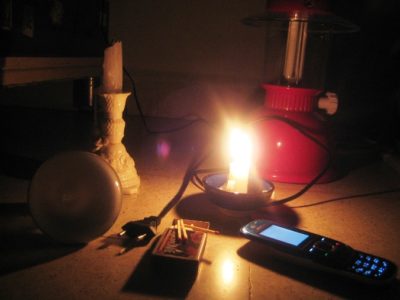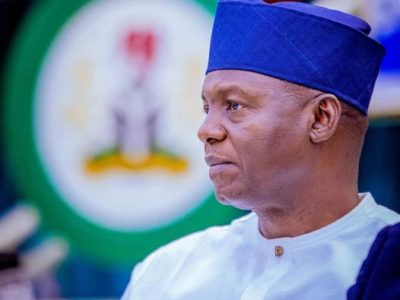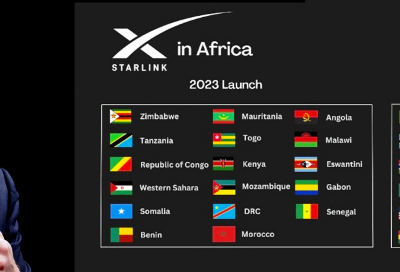After 14 years, Africa is on the verge of having its satellite, Segun Oruame
By the time RASCOMStar is launched next year, the promoters of the initiative would be hoping to solve nearly a century old problem of communication hiatus on the continent of 880 million people. They would also be hoping to open new economic and technology opportunities for one of the world’s most impoverished continents. RASCOMStar would be the first of a series of satellites to be launched by the pan-African satellite organization, RASCOM which is dedicated to providing the continent with its own satellite for relaying telephone, data and television signals. RASCOMStar is expected to come on stream March 2006. The continent’s 53 countries pay more than $600 million yearly to foreign satellite organizations for bandwidth and other connecting fees for intra-African telephony traffic routed through Europe.

There are over a dozen satellites hovering over Africa’s skies and providing services for the growing number of telecom and broadcast operators emerging in Africa’s increasingly liberalized and competitive markets. The satellites operators include: Eutelsat, Arabsat, Intelsat and PanAmSat. “These satellites are using Africa as part of their business. They are not using it as their sole business,” to quote RASCOM’s president, International Relations, Leke Betechuoh Casimir.
Despite progress made in the last few years, Africa remains technologically backward and economies of most of its countries lie prostrate with GNI per capita averaging $350. The GNI is as low as$90 in Ethiopia and Burundi though as high as $4100 Mauritius and $2.920 in South Africa to underscore the sharp income contrast on the continent. But even in countries with high GNI, affordable telecommunications access has remained a formidable challenge. The continent’s biggest economy, South Africa, with a real GDP of $145,338 million (2003) is still confronted with the problems of getting telecommunications facilities to more than 55% of its population. South Africa boasts of about the most advanced telecommunications infrastructure on the continent.
“The poor state of telecom infrastructure in Africa’s three most populous countries underscores the general state of things across the continent.”
With about 150 million people and economy with a real GDP of only $48,766 million, Nigeria’s economy trials far behind that of South Africa as the continent’s biggest. But it has the continent’s biggest population (one out of four Africans is a Nigerian) and it also has the enviable record of having one of the continent’s least telecom infrastructure. But the record for the country with the fewest telephone mainlines goes to Chad with 0 per 1,000 people followed by Democratic Republic of Congo which has a record of 2 per 1,000. The Democratic Republic of Congo is the continent’s third most populated country with a population of 53.2 million. Ethiopia with 68.2 million people takes the second position.
The poor state of telecom infrastructure in Africa’s three most populous countries underscores the general state of things across the continent. The three countries provide a classic index on how disconnected large populations of Africans are. The average tele-density for sub-Saharan Africa is 15 per 1,000 people for mainlines and 37 per 1,000 people for mobile phones. In essence, nearly 80% of Africa’s 840 million people (a less conservative figure is 880 million) still do not have access to telephone service. It is estimated that 841 million people in Africa in 2003, only 1 in 4 had a radio(210m), 1 in 12 had a TV (71m), 1 in 33 had fixed line (25m), 1 in 16 had a mobile phone(51m), 1 in 80 had access to PC (10.3m), 1 in 70 had access to Internet (12.3) and 1 in 360 had access to pay- TV (2.3m).
When RASCOM was founded in 1992, part of the objectives was to address Africa’s communication problems and end decades of routing intra-African calls through European networks. It is a high price to pay every year for a continent that earns meager income and is burdened by a debt overload of $204 billion (as at 2004).
RASCOMstar is designed to be continental in scope and be able to make concrete positive difference to ICT development in Africa. Besides, it is geared at promoting distance, education, telemedicine, social and health development on a continent where nearly 3 out of 10 children die before they turn 5 (or 284 per 1000 births) as is the case in Sierra-Leone and many other countries. In addition, the RASCOM initiative is expected to promote research and development in satellite technologies; promote human resource development especially of Africans; involve African experts worldwide, using the facilitations of global network applications; and promote partnerships among the players in the industry within and outside the continent.
When it is launched, RASCOM would have fulfilled the ultimate aim of having a dedicated Africa-owned regional satellite, to provide among others telecommunication services in rural areas of African on a large scale and at very low tariff rates: inter-urban links within a country; direct links between African countries; sound and television broadcasting; and provision of value-added services including the internet and VoIP. As the Director General of RASCOM and Chairman of RASCOM QAF Jones Killimbe put it, “we are looking at reducing the cost of intra-Africa connectivity and making communication affordable to rural communities”. By March 2006, it would be about 14 years since Africans first came together to decide on connecting themselves and for Casimir, it is “Africa’s dream come true”.




























